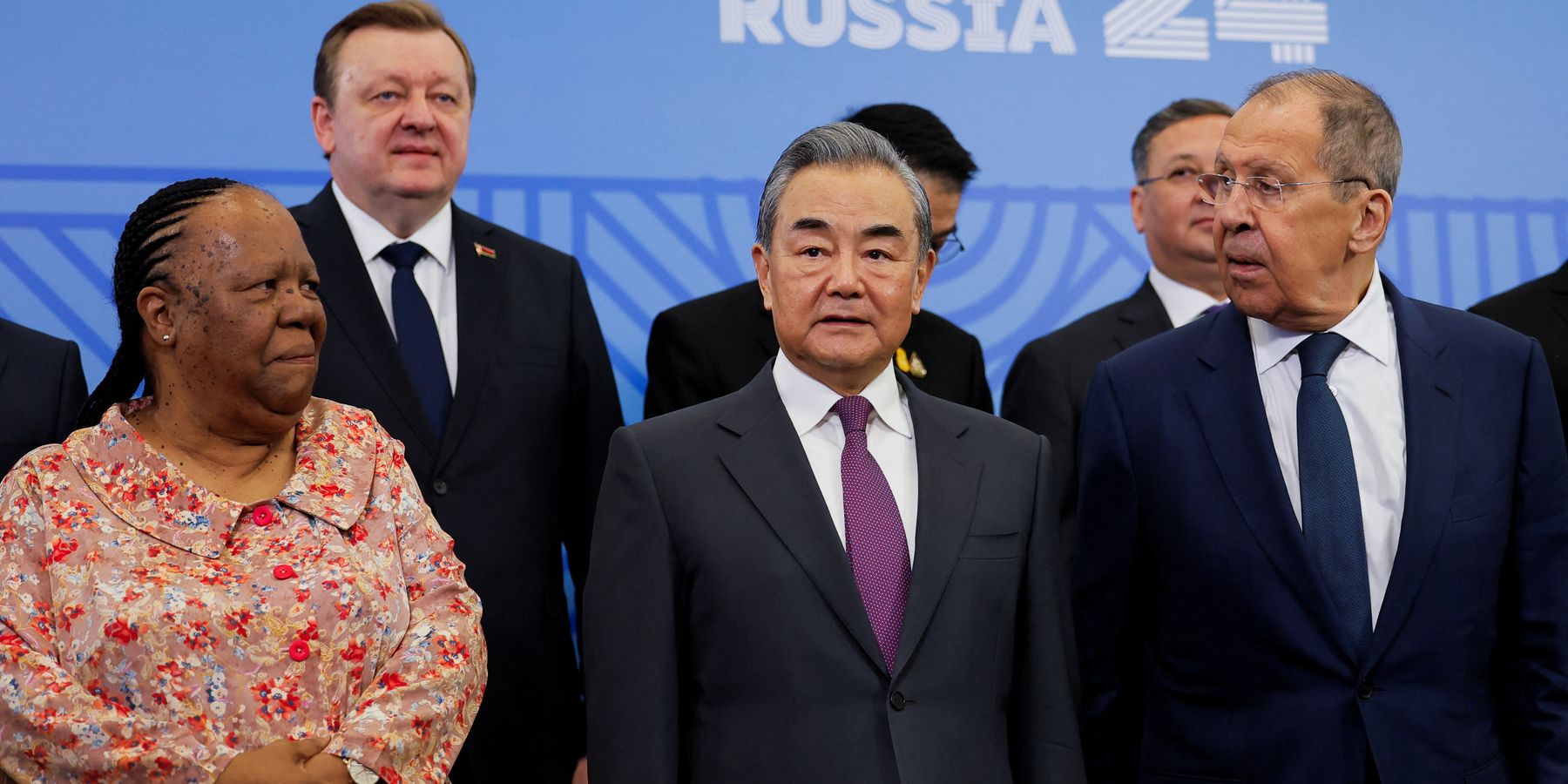Turkey’s formal application last week for membership in BRICS marks a major step forward for a bloc that expanded its membership at the outset of the year to embrace Iran, Egypt, Ethiopia, and the United Arab Emirates.
The 15-year-old coalition, whose initial members consisted of Brazil, Russia, India, and China, added South Africa in 2010 and has offered full membership to Saudi Arabia as well.
Once seen as a “paper tiger,” BRICS is increasingly viewed as a major force, attracting middle powers that are eager to boost their economies through expertise in the kinds of advanced sectors, such as high technology, renewable energy, and information technology at which China, a global leader in cutting-edge industries, has excelled.
While the primary goal of BRICS is to prioritize shared economic benefits, it is important to also recognize its inherent limitations. From the outset, the bloc seemed somewhat misaligned and modest in terms of its objectives and combined resources. Ironically, with its expansion, it now appears even more heterogeneous. To some extent, it seems to echo Ophelia’s famous line in Shakespeare’s Hamlet, “We know what we are, but know not what we may be.”
An analysis of BRICS' founding and new members highlights their divergent interests. China and Russia strongly oppose the U.S.-led global order but lack a cohesive set of values behind this stance, while India pursues a multi-alignment strategy, engaging with both the U.S. and the other major powers. Brazil and South Africa, though less confrontational, have also adopted flexible foreign policies, engaging actively in global affairs, particularly in regions like the Middle East.
Meanwhile, Brazil maintains robust economic relations with the U.S. and the EU while also nurturing ties with China and other BRICS members. South Africa balances its foreign policy between its Western partners and its growing relationships with emerging economies.
Among the new members, Iran aligns with China and Russia's anti-Western position, although its new president, Masoud Pezeshkian, has made no secret of his desire to improve ties with Europe, in particular. The UAE, a long-term and significant contributor to the U.S. economy with over 30 years of substantial investments, is using its BRICS membership primarily to broaden partnerships with countries, notably China.
Egypt, struggling with economic challenges, recently secured an $8 billion bailout from the western-dominated International Monetary Fund, while Ethiopia, facing financial strain and internal crises of its own, also turned to the IMF for a $3.4 billion loan.
These disparities among BRICS members reveal a group more defined by its differences than by any shared values or interests. Rather than a unified bloc, BRICS stands out for its diverse internal challenges and the complexities they bring.
In addition to its diverse membership, BRICS also grapples with fundamental limitations intrinsic to its structure. As the group grows, the challenge of collective action—effectively coordinating among its disparate members—has become increasingly apparent.
This issue magnifies the differences among the nations involved. The debate over enlargement is a prime example — while China advocates for swift expansion to amplify its influence, countries like India and Brazil express caution, fearing that a larger group may dilute their own strategic interests. Similarly, engagement with the West reveals deep rifts; Russia, isolated due to sanctions, seeks to deepen anti-Western alliances, whereas India, Brazil, and South Africa maintain complex but crucial ties with Western powers.
These tensions are compounded by the enduring rivalry between China and India, where border disputes and competing regional ambitions further complicate collective action.
At present, BRICS struggles with burden-sharing and lacks the leadership needed to assert itself as a formidable bloc. While China, with the largest economy by far, might be seen as a potential leader, India, whose military has clashed with Beijing’s over contested territory, is unlikely to defer to a BRICS dominated by its northern neighbor. At the same time, China's role within the G77+China caucus in the Bretton Woods institutions and in the Global South indicates its preference for a structure where it retains predominant influence and sells its global image rather than fostering a truly democratic and pluralistic organization.
Still, BRICS membership offers significant advantages despite the multiple challenges. The bloc provides a platform for member countries to collaborate on trade, economic growth, infrastructure development, and financial cooperation, and reduce their dependence on Western-dominated institutions, including the Washington-based IMF and World Bank. The New Development Bank (NDB), though still evolving since BRICS launched it in 2015, serves as an alternative source of funding for developing countries. Furthermore, economic partnerships within BRICS facilitate access to diverse markets, enhancing trade and investment opportunities across emerging economies.
There is still a long road ahead. The NDB was designed to complement, not compete with, institutions like the IMF and World Bank. Focused primarily on infrastructure projects, the NDB's goal to lend in local currencies is hindered by the continuing dominance of the dollar. Escaping this reliance requires long-term strategies, as not all member countries, unlike China’s yuan, possess stable currencies.
The borrowing trends of new members will be a crucial indicator of how BRICS’ financial architecture evolves. For instance, Egypt, which recently received an $8 billion bailout from the IMF, aims to secure a $1 billion loan from the NDB by year’s end. This suggests that a significant departure from dollar reliance and existing financial institutions remains a distant prospect.
Given the obstacles, the notion of a dominant BRICS coalition countering Western influence remains largely aspirational. The true appeal for prospective members lies in the opportunity to amplify their collective voice in global governance, fostering multipolarity and mitigating Western dominance.
Therefore, what the West must understand about the expanding BRICS bloc is that it must address the very motivations that are driving these members into this camp and reevaluate its engagement with the Global South. Viewing BRICS merely as a symbol of multipolarity overlooks its role in highlighting the deficiencies and challenges of the existing international framework.
- As BRICS leaders gather, is Washington asleep at the wheel? ›
- BRICS just announced an expansion. This is a big deal. ›
















